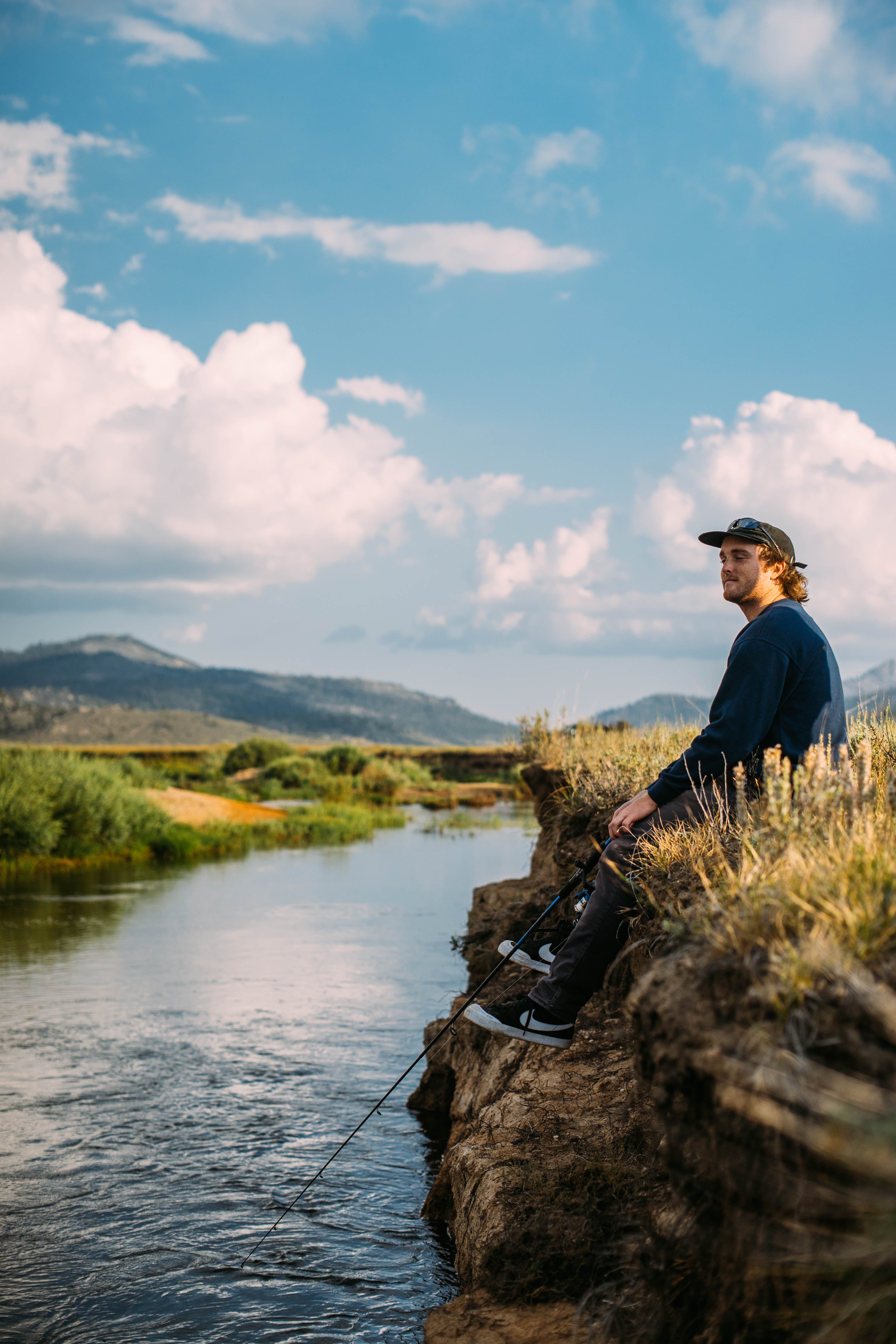5 Bank Fishing Tips

Whether you are like me and walk along the banks, constantly trying to find good fishing spots or if you have that one special spot that you fish all day, follow these bank fishing tips for a much better experience.
Tip #1: Use a Rod Carrier
I have been using a rod carrier for a few years now and it is not only convenient, but it also puts a lot less strain on your arm and wrist. Before I had this, I was carrying 3-4 rods at a time by bundling their handles together. Having a rod carrier helps eliminate wrist strain by moving the center of gravity more towards the front of the rods so that you are only carrying the weight, instead of also keeping the rod tips up.
A fishing rod carrier is very convenient in multiple ways. For one, you have up to 4 rods at your disposal. That means you can have a rod for 4 different methods, whether it be cranking, flipping, topwater, lite tackle, or something else. This can be a huge time saver when it comes to figuring out what the fish are biting that day.
It is also convenient when it comes to storage. In my garage, I have 2 bolts on the wall where I hang the rod carrier. When I am done fishing for the day, I just hang it up and it is there for me for my next trip.
Tip #2: Carry a Tackle Bag
Along with carrying multiple rods, you will also want to carry a tackle bag. Having one of these will allow you to carry a multitude of lures, hooks, weights, jigs, etc. Rather than having to trek back to your vehicle for needed tackle or even having to cut your trip short, all of the necessities will be available to you at your fishing spot.
The bag I carry can hold up to 3 containers in the large section. It also has 3 medium sized pockets on the sides and 2 smaller ones on the ends. This bag also has a single shoulder strap which helps in freeing up a hand. My bag has proven to be enough for a beginner. However, the more I fit into it, the heavier it is becoming. I would suggest buying a tackle backpack. The ones on the market today have more pockets, they have 2 straps to distribute the weight on your shoulders, and some even have an insulated compartment for keeping drinks or food cold or hot.

Tip #3: Use Polarized Sunglasses
Polarized sunglasses are a must for any type of fishing, but especially for bank fishing. Even on a cloudy day and in the evenings, they cut down on the glare from the water dramatically and allow you to see further into the water. This is crucial when spot fishing. You would be surprised at how many fish you can see or how much underwater detail you can see with them. I point out fish all the time to people that don’t have polarized sunglasses on and they can’t see what I see.
Tip #4: Keep Your Ears Opened
This may be an obvious tip for any angler, but especially when it comes to bank fishing. The idea is to listen to the activity in the water. If you are fishing for bass, you want to listen for little “smacks” on the water. This usually means there are bluegill in those areas. Bluegill and bass share the same type of habitat, since bluegill are a great food source for bass.
Tip #5: Keep Your Eyes Opened
This is another obvious tip, but it is still important. Keep your eyes focused on the water, looking for potential targets. Use your polarized sunglasses to your advantage and look under the surface of the water for movement, structure, and cover. When fishing topwater, keep your eye on your lure, watching for the attack. You also want to use your peripheral vision to spot any type of topwater action. You will want to look for bass surfacing to ambush their food by surprise.
I hope these bank fishing tips help make it a better and more enjoyable experience.

